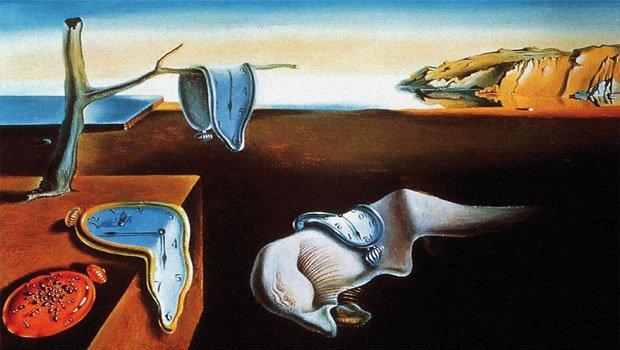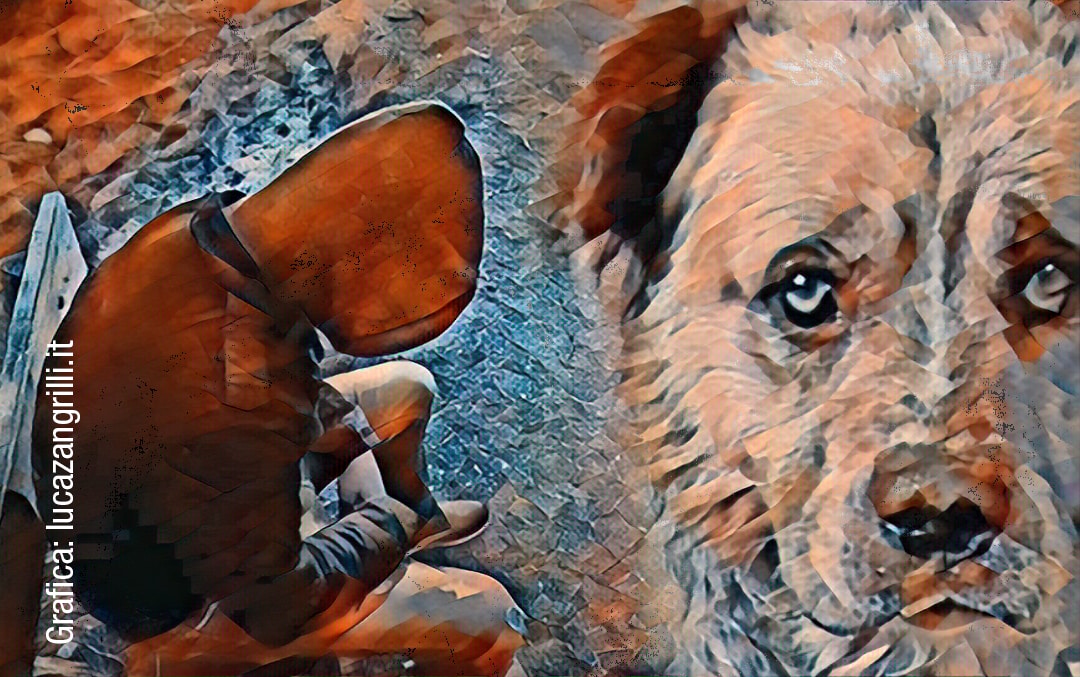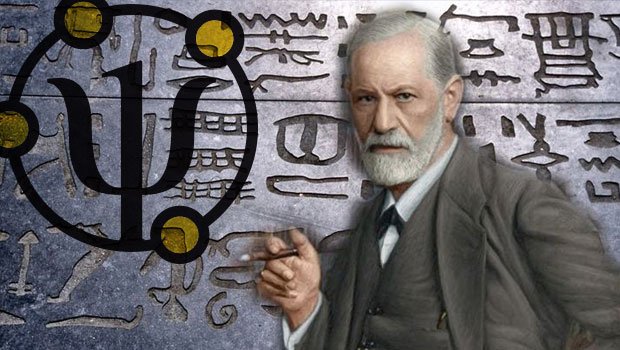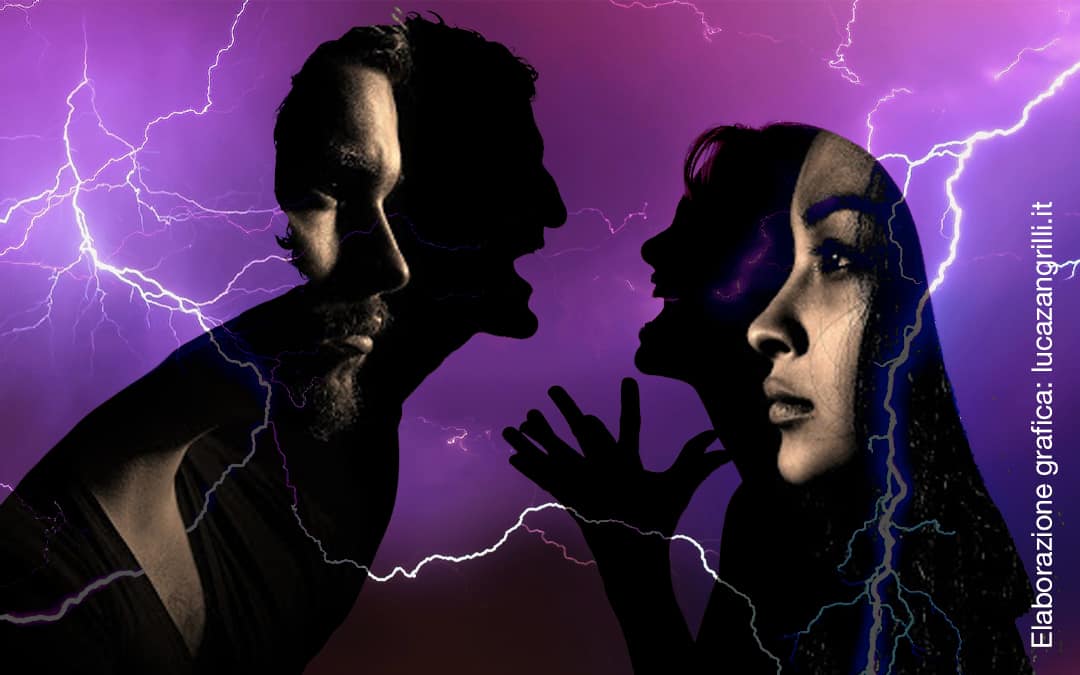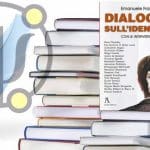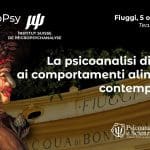The first contact, which the patient experiences towards the notion of Time, in the new dimension which he is approaching, in other words the analytic one, happens during the first session.
In that context, when the psychoanalyst dictates the rules of the meetings he also punctually says: “I invite you to remove your watch and to put it in your pocket or in another place where it is not visible. I’ll keep note of the time for you and I invite you to abandon, as far as possible, any concern regarding the perception of time”.
It could seem banal but sometimes such a simple instruction provokes very solid resistances and often throws the patient into confusion. We can therefore form the idea that Time is a defence of the psychism.
While the psychoanalyst illustrates the procedure for the free associations, he also invites the patient to abandon any reference to the temporal progression: “Here, the “but this comes before and that comes after” has no meaning” – he says.
Freud, as everyone knows, had described the primary process which governs the functioning of the unconscious as if it were governed by different laws than those of the secondary process. Space and Time do not exist in the primary process.
It almost seems a mental artifice put in this way, but instead we should know that Time is an abuse of the Ego, an expedient of the intellect which allows us to live our micro-window of existence.
The absoluteness of Time was definitively shaken by its foundations at the beginning of the century by Albert Einstein.
In 1905 young Albert was already working on this colossal enterprise and was fine tuning his reflections comparing his ideas with an italian friend, Michele Angelo Besso, who he had met at the Polytechnic of Zurich.
Walking together they had started from a shocking observation by Galileo Galilei: “It’s as if Time does not exist!” and they were looking for a scientific demonstration of that perception.
Suddenly, Albert exclaimed: “I think I’ve got it!… look at the clock tower, down there, in the centre of Berna. If we had a pair of binoculars, we would be able to see the time, but not our time. We should subtract the time that the light has taken to arrive from the clock to us. I feel that this idea will modify the notion of Time for an observer in motion. Thanks Michele!”.1
Six weeks later Einstein wrote one of the most important scientific articles of the 20th Century building the Theory of Relativity, which unhinged, for the first time, the notion of an absolute Time. For Einstein and after him, for all the physicists of the world, time does not exist in an absolute way but an indissoluble bind between time and velocity of signals exists.
I certainly am not going to venture in parallelisms with the psychics, for now this information is sufficient. It brings to mind a beautiful thought of Fanti, Codoni and Lysek which affirms:
Time is the co-pulsional interval
between the charging and discharging
of a somatic source
In other words, Time is a subjective vicissitude, which derives from the tension increase that is produced by the insurgence of a need or a desire and its resetting through the drive satisfaction.
The drug addicts know this very well, above all the heroin ones, who after the assumption of the adequate dose lose every perception of time and only begin to regain it with the degrading of the dose. It is very probable that if it were possible to build a human being capable of total drive satisfaction in a laboratory, time would cease to be of interest for him.
With the Theory of Relativity the ‘Absolute Universal Time’, which seemed to coincide with the psychological duration lived by the whole of humanity, was thrown off the pedestal of History and substituted by a multiplicity of ‘Individual Relative Times’, discordant amongst each other. The mathematic Minkowsky, who had also taught Einstein at the Polytechnic of Zurich, in 1908, in Colonia during a conference entitled “Space and Time” took it upon himself to shoot the broadside: “From here onwards Space and Time, considered separately, are destined to disappear like shadows, because it will only be a kind of union between the two concepts that will conserve an independent reality”.
For Minkowsky, and obviously for Einstein, the reality must be thought of as a “four-dimensional block” from which every temporal flow is banned. In the scientific formalism of the restricted relativity there is nothing that can correspond to the concept of “now”, in other words, to the representation of a privileged reality which describes the present. Also, there is no way to define a succession of horizontal segments or intervals, that can give life to the common mental concept of universal time. With a logical leap, obliged by the briefness of the space-time available (:-D), we could say that it is the investment of energy which creates the real events that emerge out of the blue, from a space-temporal block outside of any time flow.
It is a dramatic experiment that, every now and then, the psychoanalyst sees appear in front of his eyes when a casual energetic flow invests a latent mental representation that, if it is able to describe a relived affective experience, transports (in to the illusion of the present time of the secondary system) the child of 50 years ago who begins to whine or despair, exactly with the same expressive-cognitive-behavioural instruments of a time which in the secondary system no longer exists.
In intensive psychoanalysis it is not a case of memories or cold rational comprehension but rather the mind’s reflector which illuminates a portion of space-time that continued to exist and manifested itself indirectly disturbing the activities of the existential neighbouring complexes.
In the final conclusion of a prior work of mine (“Trauma, Memory and Cybernetic Structure of the Mind”, Science and Psychoanalysis, 2002) I wrote that relentlessly, in the unconscious, fluctuations of attempts form trying to find the actualisation and a bond, therefore, an infinity of microscopic objects continuously infiltrate the preconscious looking for a representation in the conscious. The contact with the latter system, tied to deterministic modalities of functioning of the own secondary process, causes the Collapse of Wave Function within the cloud of probability and makes the observable data (the conscious representation) precipitate, which is, in reality, the attractor of a series of possibilities of meaning which remain in the world of the “everything is possible” of the unconscious. These reflections will be intuitively clearer if we refer to the world of music.
The score of a symphony, for instance, statically but potentially contains an entire musical world that can be appreciated during its execution, in the flowing of time. Let’s see what happened instead in Mozart’s mind:
“… I now have the opera completed in my mind, or at least it’s as if I have; even if it is a long piece I can grasp it all in one go, as a painting or a statue. In my imagination, I don’t hear the opera take place as if it were played, but I capture it all in one block, so to speak”.
Mozart was granted a singularity that was not granted to the common mortals: to do without the speculative and progressive way in which humans learn music, to comprehend it “in one block”, in its entirety, aside from the flow of the temporal succession.
In effect, according to the Theory of Relativity, if we could unbind ourselves from the perceptive limits of the psychobiological support and from the laws of thermodynamics to which we are subjected, we could live our entire existence “in one block”, as if it belonged to the four-dimensional space-time of Minkowsky. I often ask myself if the frequent experience which manifests itself in those who come out of long states of coma, to see the entire existence in only one moment, is the real experience of disconnection from the reality of the objects and of accessing to the primary process in a magic zone of passing.
Another disturbing phenomenon which shows us how the unconscious can draw from events outside of the space-temporal order is that of the so called genetropism. The first person to use this term was the hungarian psychiatrist Leopold Szondi who built the theory which was quite singular to explain the bulk of disconcerting observations deriving from the thorough study of hundreds of genealogical trees.
Studying the case history Szondi realised that in the unfolding of the longitudinal phenomenology a series of events repeated themselves (the choice of partner, profession, illnesses, modality of death, etc.) in a remarkable way.
Let’s use just one example: “…An industrialist marries twice. His first wife leaves him to marry an unstable man who makes her unhappy. She begins to drink and then kills herself. The industrialist marries again to a woman whose mother also committed suicide. The fact that his sister also committed suicide, testifies the genotrophic character of the two marriages … ”
In his theory, elaborated during the span of twenty years, from the 50’s to the 70’s, Szondi affirms that: “The choice made in love is determined by the identity or the relation of certain latent genes. The human beings who look for and find each other and unite in love and marriage, are individuals whose heredity and genes are related, in other words they are carriers or conductors of identical hereditary elements”.
Ignoring the fact that a huge bulk of the scientific works of applied genetics, today still moves in this deterministic direction, I believe that the undoubtable genetropism that we often find in the genealogies of many of our patients derives from the possibility of the unconscious to draw from Minkowsky’s space-temporal four-dimensional block. We perceive events that for the secondary system, have yet to appear.
A patient of mine, who was seriously obsessive and had fixed herself on a silver hair fetish of her father, told me in an unsettled way that she had fallen for different men numerous times, all with thick healthy hair, who after a short time from the union, would show precocious greying hair. Omitting the wisecrack that she was the one to make their hair go grey, we will complete the picture by saying that when she was around 35 the woman went completely white, carrying with strange proudness a distinctive sign, which for most women is a remarkable aesthetic problem.
Another young woman came from a family tormented by a grave event which had assumed the stigmas of the family mythology. The maternal grandfather was lost at war: placed on guard of a huge powder magazine which exploded making him practically evaporate into thin air but his family, affected by a collective denial phenomenon, still hoped to see him again sooner or later. The defunct did not even have a funeral stone simulacrum and his ghost hovered in the psychism of his coevals and then of his descendants. The patient had completely identified herself in her grandmother’s destiny who had a husband who did not return. She was about to marry a brilliant healthy man, but a few days before the wedding, one evening, he says goodbye to her and leaves the house giving her appointment for the next day. Blinded by an irrational terror she begs him to stay the night, but he smiles and leaves.
After an hour the police phone her to tell her that her fiancée has died in a car accident. The patient devastated by the pain, petrified in an non-affective defence, begins an intensive psychoanalysis during which she becomes aware of her unconscious attempt to become her “grandmother’s partner” (factor that, despite her undoubtable beauty, gives her a remarkably androgynous aspect), she then achieves a feminine role and falls in love with a young man who she later marries.
Unfortunately, her husband also had the particularity of having lost his grandfather through a road accident of past times, crushed under a horse-cart which had overturned during the crossing of a river in the middle of the night. Obviously, during their engagement she knew nothing about this particularity on a conscious level.
The intensive psychoanalysis, which englobes Szondi’s Psychology of The Destiny, using his very own words, results in being the only hope of “tracing an individual plan of healing by trying to substitute the possibilities of dangerous existences that now act in the foreground in an important way, with a less dangerous form of existence, which was waiting behind the scenes for the right occasion to manifest itself”. 2
The insight of the patient is clear: “That was a choice due to my mother’s and my grandmother’s desire for that man who had died to come back and relive. I collected their unconscious desires and I subjected myself to them. One goes around to return to a certain point. That evening I was sure that my boyfriend would have died after leaving the house. An absurd, mad thing. The circle of an already made history would have closed”.
In one of his most important works “The Situation”, published in its first edition in 1987 and then revisited and widened in 2001 in the Review “Science and Psychoanalysis”, our greatly loved Master Nicola Peluffo wrote: “It is needless for me to underline the information that where there is trauma the conation to repeat exists. The attempt is that to render the event reversible. In this way the form of the repetition propagates itself from the phylo-ontogenetic past to the present, using the feedback. The energy of the trauma gives origin to psychomaterial forms which tend to conserve themselves in situations that can also be chronologically distant. Such forms become evident when a sufficient number of elements supply the matter for which they become perceptible in their secondary elaboration, even on a conscious level”.
I believe that today Peluffo would be happy about how his pioneering ideas, like seeds thrown onto fertile ground, continue to germinate.
Notes:
1 Albert Einstein – La rivoluzione della fisica contemporanea, Thibault Damour, Einaudi, 2009.
2 Leopold Szondi, Introduzione all’Analisi del Destino, Astrolabio, Roma, 1975.
Written by: Quirino Zangrilli © Copyright
Translated by Linda De Nardo
Key Words
Time
Relative time
Primary process
Psychoanalysis of The Destiny
Abstract
In the primary process of the unconscious, Time is not perceived. The notion of an absolute Time was unhinged in 1905 by A. Einstein through the formulation of the Theory of Relativity. The genetropism of Szondi’s Psychoanalysis of The Destiny is interpreted as the unconscious capability of perceiving Minkowsky’s space-temporal four-dimensional block.
Nel 2024 riceve il Premio Accademico d’Onore della Accademia Culturale Internazionale Cartagine 2.0.
Doctor Quirino Zangrilli was born in Fiuggi in 1955. Graduated with honours in Medicine and Surgery in 1980, he practices Psychoanalysis, with intensive method, since 1982. He is author of 72 scientific pubblications. He has attended as speaker or president of session to many national and international scientific Conventions. His book “La vita:involucro vuoto” (Life: empty involucre), published by Borla in 1993, has been in use by the Chair of Dynamic Psychology at Turin’s University since 1994. He is the author and founder of the multimedia review “Psicoanalisi e Scienza” (Psychoanalysis and Science), the most read Italian on line review of psychoanalysis. In 2012 he participated as a Speaker at the Scientific Festival of BergamoScienza. In 2013 he illustrated his research on the maternal-fetal interaction in the Special Session of the XI World Congress of Perinatal Medicine in Moscow with his relation “Intrauterine Imprinting”. He is visiting teacher at Moscow Institute of psychoanalysis and training psychoanalist of Swiss Institute of Micropsychoanalysis.
In 2024 he received the Honorary Academic Award of the Carthage 2.0 International Cultural Academy
Le Le Docteur Quirino Zangrilli est né à Fiuggi en 1955. Diplômé avec mention en Médecine et Chirurgie en 1980, il pratique la psychanalyse depuis 1982, en utilisant une technique intensive. Il est l’auteur de 72 livres et publications scientifiques. Il a participé en tant que conférencier ou président de session à de nombreuses conférences scientifiques nationales et internationales. Son livre “La vie : enveloppe vide”, publié par Borla en 1993, est adopté depuis 1994 par la Chaire de Psychologie Dynamique de l’Université de Turin. En 1994, il a reçu le “Prix national Ciociaria de médecine”. Il a conçu et fondé le magazine multimédia “Psicoanalisi e Scienza”, qui est le magazine de psychanalyse en ligne en italien le plus suivi au monde. (Source : Entireweb, Alexa, Google, Virgilio, Arianna., etc.). En 2012, il a participé en tant que conférencier à la colloque scientifique de BergamoScienza. En 2013, il a exposé ses études sur l’interaction materno-fœtale lors de la session spéciale du XIe Congrès mondial de médecine périnatale à Moscou avec le rapport “Intrauterine Imprinting”. Il est chargé d’enseignement au cours de spécialisation de trois ans en psychanalyse, psychothérapie psychanalytique et consultation psychanalytique à l’Université de Moscou. Il est membre didacticien de l’Institut Suisse de Micropsychanalyse et de la Commission pour la Pratique de celui-ci.
En 2024, il reçoit le Prix Académique Honoraire de l’Académie Culturelle Internationale Carthage 2.0.
В 2024 был награжден Почетной академической премией Академии Международной Культуры «Карфаген 2.0».

